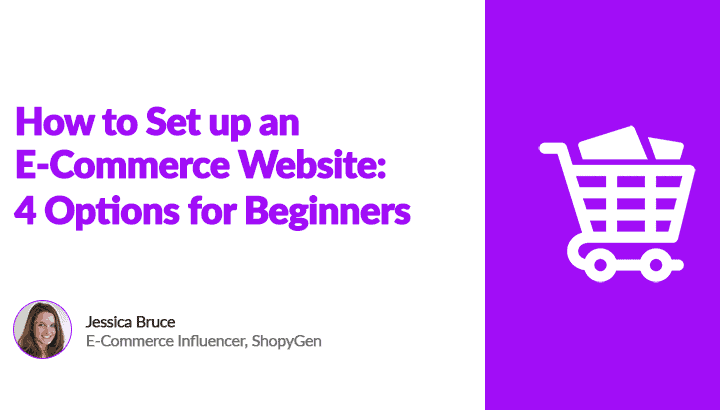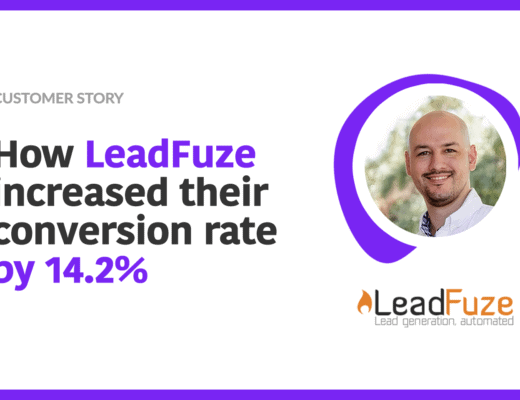E-Commerce has unarguably become a trending niche for the venture in the online market of products and services. Despite the fact that there are hundreds of eCommerce sites already in the market, there is still massive scope for new entrants with unique products, services, and business models.
To clear your doubts, be advised that almost 50% of the globe has not even started shopping online yet, and still the online sales in 2018 were recorded over 2.8 trillion U.S. dollars. Experts believe this number would go beyond $4.8 trillion marks by 2021. (Source: Statista)
The online marketplace is going to be a mammoth business sphere in the coming era and you don’t want to miss a chance to cash as much as you can. We have seen companies like Alibaba and eCommerce entrepreneurs like Jack Ma turning the personal net worth over $40 billion in a very short span of time. I believe I don’t have to tell you how Amazon’s CEO Jeff Bezos is the richest man with a net worth over $160 billion. It’s only possible with a massively profitable niche like eCommerce.
If you too want to join the race and become a successful entrepreneur in the eCommerce industry, this article will help you take the very first step. I will explain how to create eCommerce website using different methods, and compare them on various aspects. We shall also cover the part where you would discover the pre-requisites you need to possess before getting into the website development phase. So here it is-
Prerequisites of owning an eCommerce store
- Domain Name: A domain name synchronous to your brand
- Server: Decide if you want a hosted or self-hosted site
- SSL: An SSL certificate
- Payment Partner: A PCI-DSS compliant payment gateway
- Shipping: A reliable shipping partner
- Packaging: A product packaging partner
- Registration: Register your business
- Local License: Get a business license in the areas to be served
- Logo: Get a brand logo
- Theme: Decide your theme according to your brand
Aspects of comparison
The four options I am going to discuss here represent different arena and varied ways to get you to an eCommerce store for your business. Depending on the circumstances, each of them offers you a definite set of pros and cons. Here is a list of factors, I think influences a decision to choose any one of the options:
- Suitable for: Kind of venture it suits the best
- Technical skills required: Skills you should possess to develop, setup, and manage your site
- Hosting: Type of web hosting it supports
- Access to the source code: Can you access the course code?
- Scalability: extent up to which it can scale your business
- Customization: Ability to customize the code to add new features
- Multi-vendor eCommerce: Support for multi-vendor marketplace model
- Time: Time required for getting live with the store
- Cost of acquiring: Budget for development and website maintenance
- Cost of customization: Additional cost for customization in the future
Comparison: 4 major ways to get an eCommerce site in 2019
The four major ways to get an eCommerce store represent the conditions when you have to choose a particular option despite knowing its cons. This comparison will give you a better understanding of the odds and help you select the best suitable one in a defined circumstance. Here are the four major options you would get in 2019 to build your eCommerce website:
Option 1: Code everything from scratch
Option 2: Purchase subscription for a SaaS/PaaS eCommerce platform
Option 3: Customize a free self-hosted eCommerce CMS
Option 4: Purchase a premium self-hosted eCommerce software
| Aspects | Scratch | SaaS/PaaS | E-Commerce CMS | Premium Self-hosted |
| Suitable for | Suitable for large scale websites with innovative ideas and entrepreneurs with –
| Suitable for small to medium scale businesses and entrepreneurs with-
| Suitable for small to medium-sized businesses. Also depends on the platform you choose. Some platforms give scalable solutions as well. | Suitable for small to large scale projects with innovative and complex business requirements. |
| Technical Skills | Expert level coding, designing, and server management skills are required. You need expertise on popular tech stacks like:
In addition, expertise in different fields like payments, testing, email APIs is a must. | No coding or technical skills are required. The vendors of the SaaS/PaaS platform cover everything for you. You just need basic computer skills to manage your site. |
Note: You only need basic computer skills to install the modules, if you prefer purchasing the modules instead of developing them on your own. | No technical skills required. These are ready-made solutions ready for deployment. |
| Hosting Type | Can be self-hosted | Already hosted on a cloud server | Both SaaS and Self-hosted options available. | Self-hosted |
| Source code Access | Yes | No | Yes. Both closed source and open source options available. | Yes |
| Scalability | Highly Scalable (depends on the tech stack and selected web server for hosting) | Moderately scalable. Also depends on your vendor’s tech stack and efficiency of the cloud server. | Except for Magento, all other CMSs are moderately scalable. Magento possesses massive scalability in different versions. | Highly scalable. |
| Customization | Highly customizable | You cannot customize by yourself as you don’t have the source code. Some SaaS platforms do allow third-party developers to perform limited customizations. | Limited customizability in SaaS options. Moderate customizability in self-hosted options. Customization can be done in the form of modules and extensions. For example, Magento extension to add a new payment gateway. | Highly customizable to add any new feature or requirement. |
| Multi-vendor | Depending on your skills, you can develop the multi-vendor feature on your own. | Some platforms allow you to purchase their additional modules to convert your store into the multi-vendor model. | Can be converted to a multi-vendor model using a paid marketplace module by any well-known developer. | Feature present by default in many solutions. In addition to products, many solutions come with features to set up even complex marketplaces like service marketplace sites, home-rentals, grocery delivery service, etc. |
| Update & Upgrades | Have to do it by yourself | Free release from the vendors. (differ from vendor to vendor) | You get regular free updates and upgrades for the base CMS. Module providers also release their regular updates. | Regular updates and upgrades from the vendors. |
| Time | Takes the longest time. Depending on the features and scalability the project could extend beyond 10 months. | Quickest deployment time (within hours) | Moderate time frame. Roughly around a day to set up the base site. May extend to days and months if doing any customization. | Quick time deployment. Roughly within a day. |
| Cost (Acquiring) | Cost of acquiring (if self-developed):
Cost of acquiring (out-sourcing/hiring developers):
Note: Outsourcing or hiring the developers from scratch is the most expensive way to build your eCommerce store. | The cost differs from vendor to vendor. The cost of acquiring involves:
| No cost of acquiring. Base platforms are generally free to use. | Varies from the vendor to vendor. They generally involve large upfront cost as you do not need to pay any monthly fee. A typical premium eCommerce platform may cost you around $500 with website suite and around $1500 with a complete suite of Website, Android App, and iOS App. |
| Cost (Customization) | Same as above. Developers need to be paid in per hour basis. Lowest a developer could ask is $50-$60/hour. | In a decent SaaS platform, you would find most of the features in-built or bundle with the subscriptions package. So most of the time, you don’t have to pay for new features being released as updates and upgrades. | Module developers sell different ready-made customizations. The cost of the modules differs from developer to developer.
| Cost of customization involves hourly payment to the developers. Typically around $50-$60 per hour. |
| Example | Sites developed on LAMP, MEAN, MERN, and Python, etc. | Shopify, Volusion, BigCommerce, WooCommerce(for WordPress cloud version), etc. | Magento community, PrestaShop, OpenCart, WooCommerce Plugin (for WordPress self-hosted version), etc. | ShopyGen |
Conclusion
So these are four major ways to create an eCommerce website in 2019. I find the SaaS and Premium self-hosted options way suitable than the other two. It because a SaaS solution lets you own an eCommerce business without having any technical skills.
On the other hand, the premium self-hosted solutions also let to do the same, but also offer better customizability and control over the site. If you can afford some decent upfront cost then premium eCommerce software would be a perfect choice.
However, if you are willing to pay a small recurring charges then SaaS/PaaS is a good choice. I do not recommend the Scratch approach as it is very complex, time consuming, and expensive. A per the eCommerce CMSs are concerned, premium self-hosted solutions offer all their benefits plus additional scalability and unlimited customizability against the limited customizability in the CMSs.








